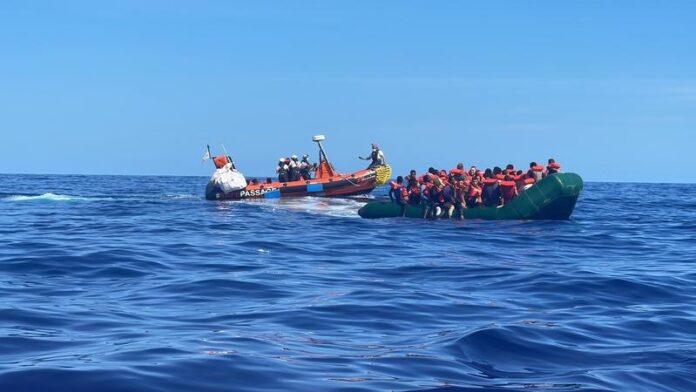Forty-two migrants are missing and presumed dead after a rubber boat capsized off the coast of Libya in early November, with only seven survivors rescued after drifting at sea for six days, according to the United Nations.
The vessel departed from Zuwara in northwest Libya around 3 a.m. on November 3, 2025, carrying 49 people—47 men and two women. According to survivors, the boat capsized approximately six hours later when high waves caused the engine to fail, throwing all passengers overboard into the Mediterranean Sea.
Libyan authorities rescued the seven survivors on November 8, 2025, after they had spent six days adrift at sea. The rescued individuals included four people from Sudan, two from Nigeria, and one from Cameroon. The International Organization for Migration provided emergency medical care, water, and food to the survivors upon their arrival at the disembarkation point in coordination with local authorities.
The 42 missing passengers, who are presumed dead, include 29 from Sudan, eight from Somalia, three from Cameroon, and two from Nigeria. The incident represents one of the deadliest shipwrecks on the Central Mediterranean route in recent months.
The United Nations issued a statement on November 12, 2025, highlighting the urgent need for action to prevent further loss of life. “IOM’s team provided the survivors with emergency medical care, water, and food upon arrival at the disembarkation point in coordination with relevant authorities,” the agency said in a statement.
Reports indicate the Central Mediterranean route, which spans from North Africa to Italy, has gained a grim distinction as the world’s deadliest migration route. The journey can take days to complete, and migrants often travel in unseaworthy, overloaded inflatable boats that are vulnerable to rough seas and mechanical failures.
Libya has become a major departure point for migrants from across Africa and the Middle East attempting to reach Europe by sea. The country has been divided since a civil war erupted in 2011 following the ouster of longtime dictator Muammar Qaddafi. The ongoing instability and lack of centralized control have made Libya’s coastline a hub for human smuggling operations.
The death toll off Libya’s coast has been mounting throughout 2025. By the end of October, at least 527 people had died attempting the crossing from Libyan waters, according to the International Organization for Migration. Reports indicate that more than 1,000 lives have been lost in the Central Mediterranean during 2025, underscoring the ongoing humanitarian crisis in the region.
The November incident occurred just weeks after other deadly shipwrecks near Surman, Libya, and the island of Lampedusa in southern Italy. The pattern of recurring tragedies has prompted renewed calls from humanitarian organizations for comprehensive solutions.
The International Organization for Migration urged the international community to strengthen regional cooperation, expand safe and regular migration pathways, and improve search and rescue operations to prevent further loss of life. “These recent incidents highlight the ongoing dangers faced by migrants and refugees on the central Mediterranean route,” the agency stated.
For the seven survivors of the November 3 capsizing, their six days adrift at sea represent an extraordinary ordeal of survival against overwhelming odds. Their rescue provides a rare opportunity for authorities to gather detailed information about the circumstances that led to yet another deadly incident on this treacherous migration route.

